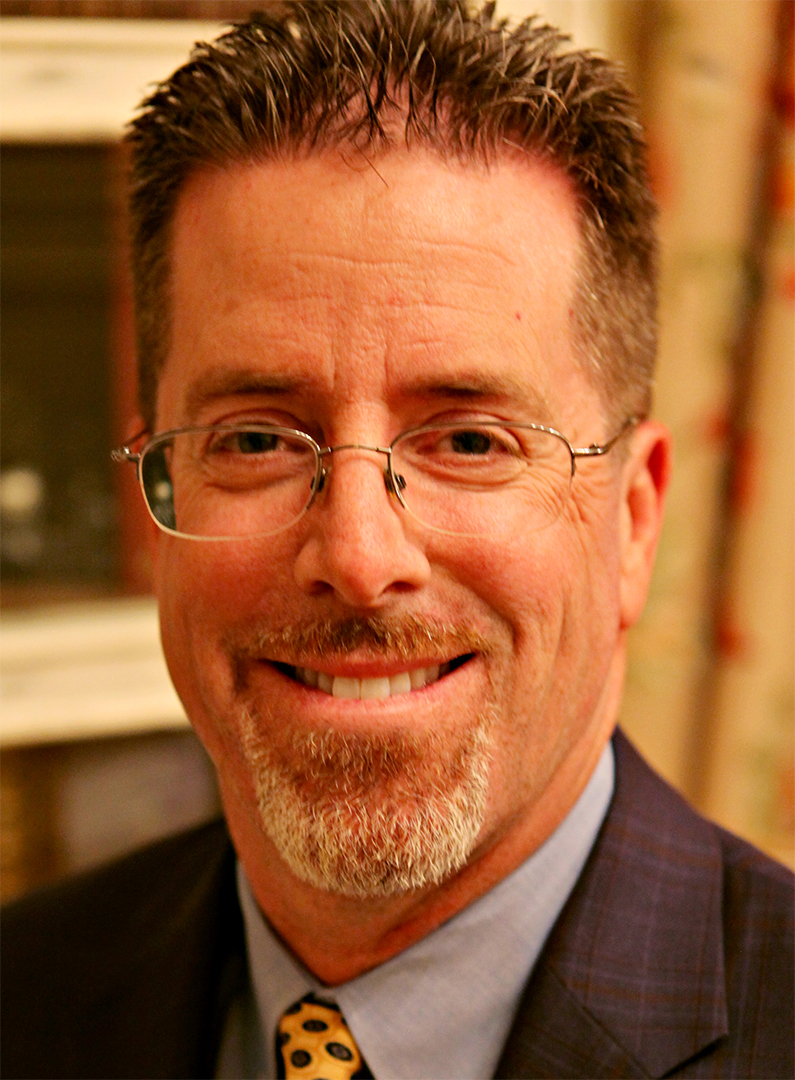
As WTI pushes through $50 and above, E&Ps are more apt to hedge. The tools they use depend on their conviction on prices.
A version of this story appears in the November 2017 edition of Oil and Gas Investor. Subscribe to the magazine here.
With the recent “lower for longer” commodity price environment keeping crude prices in a relatively narrow range, hedging has become an increasingly important tool for E&Ps trying to lock in returns on capital programs. A shift in pricing from the lower to upper end of an approximate $8-per-barrel (bbl) price range resulted in a tenfold increase in its activity, according to one hedge advisory firm.
But even as hedging provides greater visibility of revenues to fund capex programs, as with other factors in the interplay between capex levels, production and crude prices, there is a secondary effect. West Texas Intermediate (WTI) prices at $50 and above are increasingly viewed as an upside target at which heavy producer hedging emerges to subdue rallies in the forward market.
Historically, of course, E&Ps have often reached into their financial toolkit to employ hedging.
“We’ve hedged the same way for a decade,” said Tim Leach, CEO of Concho Resources Inc. (NYSE: CXO), at a recent Barclays conference. “I think there’s efficiency in steadiness.”
Tim Dove, CEO of Pioneer Natural Resources Co. (NYSE: PXD), voiced sentiments at the Barclays event.

“Derivatives are critical to us. We want to be able to run the machine at its designated RPMs going forward and keep that going,” he said. “And the way to do that is to protect ourselves from a cash-flow standpoint. That’s why we do what we do through our derivatives [i.e. hedging] campaign.”
Among unconventional producers, Parsley Energy Inc. (NYSE: PE) is perhaps the poster child for proactive hedging strategies. As of mid-September, the company’s hedge position covered close to 95% of consensus oil volumes for 2018, according to CFO Ryan Dalton. Parsley manages its hedge book in-house and is an “active” hedger (vs. a “passive” hedger tending to hold hedges through expiration).
Parsley Energy's hedging strategy is one where it is "willing to pay a premium for the upside," according to CFO Ryan Dalton.
Parsley has distinguished itself as one of the fastest-growing Permian producers, having chalked up a compound quarterly production growth rate of 16% over 13 quarters as a public company. Total capex, including infrastructure, is set at slightly more than $1 billion for 2017. Capex has not been announced yet for 2018, but further strong growth in production is expected next year.
“When we’re committing that much capital to a drilling program, we don’t want to have commodity pricing dictate that we’re going to have to stack rigs for a while. We want to have a plan, and we want to be able to execute on that plan,” said Dalton.
“Year after year, we’re one of the highest-growth companies,” he continued. “In order to achieve that growth, you have to spend more money. And if we’re spending more money each year, we’re at a higher risk of seeing our leverage increase if we get downward pricing pressure. Our ultimate goal is to protect our balance sheet.”
While Parsley is unlikely to always have 90% of oil output hedged, “this time it feels right,” commented Dalton. “It makes us sleep better at night and it helps investor confidence. We don’t know what OPEC’s going to do in November. OPEC could say, ‘We’re going to flood the market,’ and oil could crater.”
Dalton is quick to acknowledge a variety of hedging strategies exist to suit operators’ varying needs.
At one end of the spectrum are companies that prefer to use swaps and don’t want to pay a premium for their hedge positions. They settle on a price—say, $50/bbl—at which companies can run their business and make an acceptable return. “Whether oil’s at $50 or $60, they still get $50. You’re basically locking in a price. It’s costless to them,” he said.
“We tend to be at the opposite end of the spectrum; we are willing to pay a premium for the upside,” observed Dalton. In its simplest form, this may involve buying a put at, say, $50/bbl, providing downside protection at that level, but retaining upside if prices move higher. In certain cases, the company may also establish a “short put” position at a lower level, for example, by selling a put at $40/bbl. Selling the $40 put helps offset part of the premium paid for the $50 put and creates a “put spread.”
Parsley noted it had “put spreads” and “three-way collars” covering about 69,000 barrels per day (bbl/d) of its 2018 oil production.
What happens in the event of a steep decline in oil prices?
“Back when oil prices fell from over $100 per barrel to sub-$30 per barrel, we collected north of $100 million, which we were largely able to realize because we were managing our hedge positions,” said Dalton. “If oil prices are declining, and it makes sense to roll down our positions, we would do that again.”
Pioneer CFO Rich Dealy describes his company’s hedging strategy as mainly passive but with plenty of flexibility to be active when circumstances dictate.
“When I look back at what happened in the 2014 to 2015 period, we actively modified our positions, since we thought commodity prices were going to fall faster than people generally anticipated,” he said. “So we modified our positions from three-way collars to swaps to give us the most protection. We’re not afraid to change positions based on our view of where the commodity is going. We’ll find the right derivative to provide the best insurance for the company.”
Typically, Pioneer aims to have about 85% of oil production forecast for the following year covered by hedges, according to Dealy. As of mid-September, the company’s hedge position covered roughly 70% of its projected 2018 oil production.
“Every year we approve a multibillion-dollar drilling budget, and we have to enter into contracts early on to execute those drilling programs. What we’re trying to do with these hedging programs is to assure we’re going to have the cash flow to cover that capital program. The goal is to have a base level of cash flow we’re confident we’re going to receive. It’s insurance; we’re not out there speculating.”
Historically, Pioneer has implemented hedging programs extending out three years, but currently, it is proceeding more slowly in hedging beyond a single year. This reflects not only the reality of rising volumes from the U.S. unconventional sector, but also recognition that a lack of final investment decisions (FIDs) on long lead-time projects will eventually come into play, said Dealy.
“We typically have a three-year program, but we’re doing basically a year at a time now because the forward curve is so flat, and we do think there’s more upside in the future due to the lack of FIDs over the last three or four years,” he explained. “We’ll continue to edge out, but we’re going to be a little bit slower about it for 2019 and 2020. We expect some improvement in oil prices, but barring a black swan event, it’s going to be gradual, not immediate.”
Three-way Collar

Pioneer’s extensive hedging program covers not just crude oil and natural gas but also ethane and butane, taking advantage of periodic strength in demand from the petrochemical and refinery sectors.
One of Pioneer’s favored instruments—used with crude, natural gas and butane—is a three-way collar. How do these instruments work?
Three-way collars "allow us to participate in the upside and have protection on the downside," said Pioneer Natural Resources CFO Rich Dealy.
Dealy runs through the various elements of a three-way collar, assuming Pioneer has bought a put at $50/bbl, sold a call at $65 and sold a put (“short put”) at $40.

“Between $40 and $50, we’re going to get $50. Below $40, we’re going to get the spread between $40 and $50, or $10 above whatever the market price is: if it’s $30, we’re going to get $40; if it’s $35, we’re going to get $45. We’re always doing better than the market at this point in time. When we’re between $50 and $65, we get whatever the market price is. And if the price is above $65, we’re capped at $65,” he explained.
“This allows us to participate in the upside and have protection on the downside. In addition, as crude prices go up, we face inflation from oilfield service providers. We don’t want to get a margin squeeze. By doing a three-way, we get to participate as prices move up and make sure we protect those margins.”
Use of three-way collars vs. swaps or collars depends on one’s view of the path of crude oil, said Dealy. “Strategically, if Pioneer is more worried about prices going down, we’re probably going to be using swaps or collars more heavily,” he said. “If we generally think the trend for crude is up, we’re going to be more in the three-way category.”
The Pioneer CFO estimated that the strategy has probably brought in “insurance proceeds” of around $2.5 billion of incremental cash flow that the company would otherwise not have had over the last seven or eight years. As of Sept. 1, the company had 155,000 bbl/d of crude production hedged with three-way collars and 6,000 bbl/d hedged with collars, equivalent to 90% of forecast fourth-quarter output.

Over time, as Pioneer becomes cash-flow positive and generates increasing amounts of free cash flow (i.e. cash flow in excess of capex), it anticipates dialing down the “insurance” needed via hedging, according to Dealy. For example, if cash flow is projected to exceed its capex by $500 million, its hedges would likely cover the projected capex component rather than the entire cash-flow amount.
Aegis Energy Risk LLC, based in Houston, is a hedge advisory firm that serves more than 50 independent upstream producers. It works with clients in developing custom hedge plans that are broadly static but subject to appropriate adjustments as market fundamentals change. Its client base is spread throughout the U.S.
"Volumes are starting to pick up because companies are more accepting that we may be in this range-bound environment for the short term," said Aegis Energy Risk's president Justin McCrann.
As WTI crude prices moved from the lower to the upper end of its recent trading range over the summer, interest in hedging by E&Ps has “picked up very significantly,” according to Aegis President Justin McCrann. From “very light volumes” when crude was trading in the low $40s in June, hedge volumes increased markedly—as much as tenfold—as prices rallied toward $50/bbl over the course of July and August, he recalled.
“Volumes are starting to pick up because companies are more accepting that we may be in this range-bound environment for the short term,” observed McCrann. “As crude gets back to $50 per barrel, producers are becoming more comfortable with that level, whereas in years past they have been more resistant.”

Aegis takes a “conservative” approach in hedging, using mainly swaps, collars and three-way collars.
“It’s important that clients have diversity in the structures themselves, so they aren’t all loaded up on one type of hedge, like all swaps or all calls,” said McCrann. “We provide guidance on the structures, we take an opinion on the market, and we try to work that into our hedge portfolios. Essentially, it’s about sticking with the hedge plan and taking opportunities that the market gives us.”
This is not to suggest that a hedge plan devised for an E&P—once in place—is left to run its course.
“We’re steeped in the market fundamentals, so we’re constantly revising our data points and how the market is looking,” said McCrann. “Earlier in the summer, when prices were in the low $40s, we recommended more upside-friendly structures, like collars, if clients were putting on hedges. When the market traded up to $50, we adjusted our view to ‘neutral’ and recommended more swaps, which was fairly well-received.”
Like others, a focus for Aegis is the Permian Basin, which currently accounts for 70% to 75% of the growth in production that is being hedged by the company, according to McCrann. “But we have a footprint across the U.S.”
In terms of the macro outlook, U.S. production growth will be “the highest across the globe this year and probably also next year, assuming the OPEC production agreement stays in place,” observed McCrann. “The resources here in the U.S. are vast, and at $50 per barrel, we can grow production. We just need to do it at a rate that doesn’t eclipse demand growth globally.”
Proactive Hedging
ARM Energy, a Houston-based energy advisory firm, serves around 125 clients worldwide. In addition to producers in major U.S. basins, it has clients in West Africa, the Mediterranean and Canada. Its client base produces more than 400,000 bbl/d of crude and several billion cubic feet per day of gas, making it likely the largest single hedging participant in the U.S. natural gas sector.
ARM believes in a “dynamic” or “proactive” hedging strategy, according to Tom Heath, president of ARM’s financial services.
“We think you should treat your hedge positions as assets and manage the assets appropriately,” said Heath. “We believe keeping hedges effective is prudent. Rather than unwinding hedges and rehedging, it often makes sense to stack structures on the existing portfolio to take advantage of market opportunities.”
As an example of actively improving the portfolio, Heath cited how natural gas prices faded last fall below $3 per thousand cubic feet.
“With consensus calling for a bullish turn coming into the 2016 to 2017 winter, the timing seemed right to convert swaps to collars or participating swaps,” recalled Heath. “In mid-October, gas prices spiked, yet the perception was that—it being still pre-winter—it was too fast and too early. This allowed our clients to de-risk portfolios and find an additional point in time to reseek upside participation, which in fact presented itself as the calendar moved through November.
“We don’t normally optimize a hydrocarbon several times in a quarter, but that particular period gave us so many chances to help the producer out,” he said. “We weren’t placing bets, taking them off, and then placing them on again. Instead, we were stacking and improving the structures in instances in which we thought the market was starting to show signs of being a bit top-heavy.”
Heath emphasized the multitude of different strategies, depending on company profile, risk appetite, specific basin characteristics, concentration risk, bank covenants and more. “Every strategy is different. The theme is similar, but very customized. We probably have 125 different strategies for our 125 clients.”
Given recent relatively low volatility for WTI, coupled with a move above $50/bbl as the summer closed out, Heath discussed the merits of strategies involving swaps vs. three-way collars.
With WTI having gradually appreciated above $50, “it doesn’t make much sense to apply a three-way in crude now,” he said. “Given very low implied volatility, a three-way producer collar does not provide an appropriate risk/reward condition. In essence, you’re selling two options and buying one option with a producer three-way, so technically you’re selling volatility. Volatility is too low to consider encumbering the downside with a short put. The premium recovered for selling the put is not enough to justify the position.”
As for swaps, observed Heath, “if you’re growing materially by the drillbit, and your production comes online just down the road, I think you should make the initial hedge count and put on a fixed price swap. For example, if you put on a $50 swap, and then the market goes to $45, your new volumes are at $45, but you locked in your existing volumes at $50. The hedge did what it was supposed to do—protect the volumes already coming into the house.”
The inverse outcome, for example, is that “you put on a swap at $50, and the price goes to $55, and then your new volumes come on and get hedged at $55. You’re okay. You won one,” said Heath. Such cases, however, are at times frustrating when conservative producers are afraid of putting on hedges and then being “wrong” if prices go up.
“Put it in this perspective,” offered Heath. “If you bought flood insurance on your house and it didn’t flood—so that you paid the premium, but it didn’t flood—would you be upset? I assume not.”

In terms of broader hedging, Simmons & Co. estimates that its coverage group had hedges, as of mid-September, covering about 28% of its projected 2018 oil production as compared to 15% at the same time last year for 2017, according to senior research analyst Dave Kistler. The weighted average price that E&Ps expect to realize comes to almost $50.50.
"We think you should treat your hedge positions as assets and manage the assets appropriately," said Tom Heath president of financial services, ARM Energy.
According to Kistler, E&Ps have of late found themselves between a rock (low $40s WTI) and a hard place ($50 and somewhat higher). Complicating matters are often fickle investor groups who may support a more returns-focused strategy—usually when crude is below $50—only to advocate a growth strategy as crude prices exceed $50. In loose supply/demand environments this can lead to higher E&P production, sliding crude prices and, with WTI back in the low $40s, austerity and another “rinse and repeat” cycle.
“In some ways this is a self-fulfilling prophecy,” said Kistler. “After periods of subdued prices, as crude gets near $50 per barrel, E&Ps tend to look out to the forward year and want to make sure they’re locking in their ability to spend within cash flow or at least support a budget that allows them to continue to hold the acreage they’ve acquired. So, they go and hedge forward at $50 where they are generating attractive half-cycle wellhead returns, and in doing so they’re putting pressure on the commodity at $50.”
Third-quarter earnings will likely show that E&Ps have added incremental hedges around $50, according to Kistler, as well as selling floors/puts around $40 to enhance swap prices. “They know activity tapers at around $40 per barrel,” he noted.

“Hedges give the companies visibility of cash flow that facilitates their ability either to meet growth metrics that they’ve guided to, or to be able to get onto a path of showing improving returns on capital employed over time,” he observed. “What’s disconcerting is the conundrum between targeting growth vs. living closer to cash flow and generating slightly higher returns over time. As yet, I don’t think companies have 100% confidence they’ll be rewarded by the investor for the latter strategy.
“Nonetheless, we’re seeing positive developments on this front that have been rewarded by investors,” he said. “Should this trend of capital stewardship continue, production growth may be less pronounced and constructive for an improving supply/demand outlook and a corresponding strengthening in oil prices over time.”
E&Ps tend to "hedge forward at $50," observed Simmons & Co. senior research analyst Dave Kistler, "and in doing so they're putting pressure on the commodity at $50."
Of course, people need to choose a hedging strategy that suits their needs and fits their commodity outlook. So, given the OPEC meeting for Nov. 30 in Vienna, what is one person’s outlook?
“I think they [OPEC] will kick the can down the road, figure out a way to extend the cuts, and set up for a soft landing in hopes that supply and demand rebalance over a certain time period—whether it’s three months or six months—in which time demand increases enough to soak up the extra supply,” said Pioneer’s Dealy. “Obviously, they’d all prefer to see prices above $50 rather than in the $40s.”
Chris Sheehan can be reached at csheehan@hartenergy.com.
Recommended Reading
Exxon Slips After Flagging Weak 4Q Earnings on Refining Squeeze
2025-01-08 - Exxon Mobil shares fell nearly 2% in early trading on Jan. 8 after the top U.S. oil producer warned of a decline in refining profits in the fourth quarter and weak returns across its operations.
Phillips 66’s NGL Focus, Midstream Acquisitions Pay Off in 2024
2025-02-04 - Phillips 66 reported record volumes for 2024 as it advances a wellhead-to-market strategy within its midstream business.
Rising Phoenix Capital Launches $20MM Mineral Fund
2025-02-05 - Rising Phoenix Capital said the La Plata Peak Income Fund focuses on acquiring producing royalty interests that provide consistent cash flow without drilling risk.
Equinor Commences First Tranche of $5B Share Buyback
2025-02-07 - Equinor began the first tranche of a share repurchase of up to $5 billion.
Q&A: Petrie Partners Co-Founder Offers the Private Equity Perspective
2025-02-19 - Applying veteran wisdom to the oil and gas finance landscape, trends for 2025 begin to emerge.
Comments
Add new comment
This conversation is moderated according to Hart Energy community rules. Please read the rules before joining the discussion. If you’re experiencing any technical problems, please contact our customer care team.




